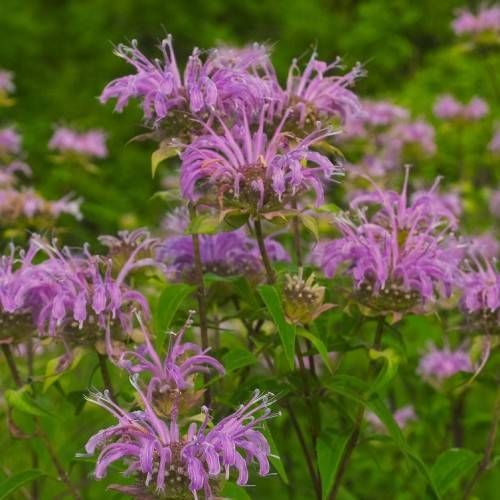
wild bergamot
Monarda 'Peter's Purple'
Cycle:
Herbaceous Perennial
Watering:
Frequent
Hardiness Zone:
6 - 9
Flowers:
Flowers
Sun:
Full sun,part shade
Leaf:
Yes
Growth Rate:
Low
Maintenance:
Low
Drought Tolerant:
Yes
Salt Tolerant:
Yes
Care Level:
Medium
watering
Wild bergamot likes to grow in moist, well-draining soil. It should be watered regularly, but not excessively. Water deeply once or twice a week, ensuring that the entire root system is soaked. Do not allow the soil to dry out completely between waterings. In dry or hot weather, it may need to be watered more frequently. Make sure to provide plenty of drainage so the roots don’t become waterlogged.
sunlight
Wild bergamot (Monarda 'Peter's Purple') can benefit from at least 6 hours of full direct sunlight each day, although it can tolerate some shade in the summertime. As most Monarda varieties prefer their sunlight between noon and mid-afternoon, these plants should get their greatest amount of sunlight during this peak time. If your Monarda is planted in a spot with more shade than sun, it may not reach its full potential.
pruning
Wild bergamot (Monarda 'Peter's Purple') should be lightly pruned back in early spring, just before new growth begins. You can remove up to about 1-third of the stems and or dead flowerheads, which will encourage bushier growth. After the first flush of blooms appears, you can also dead head the plant to promote reblooming. Pinching back the tips of tall stems can help keep the plant's overall size under control. In late fall, you can also cut stems back to the ground to help prevent winter damage.
